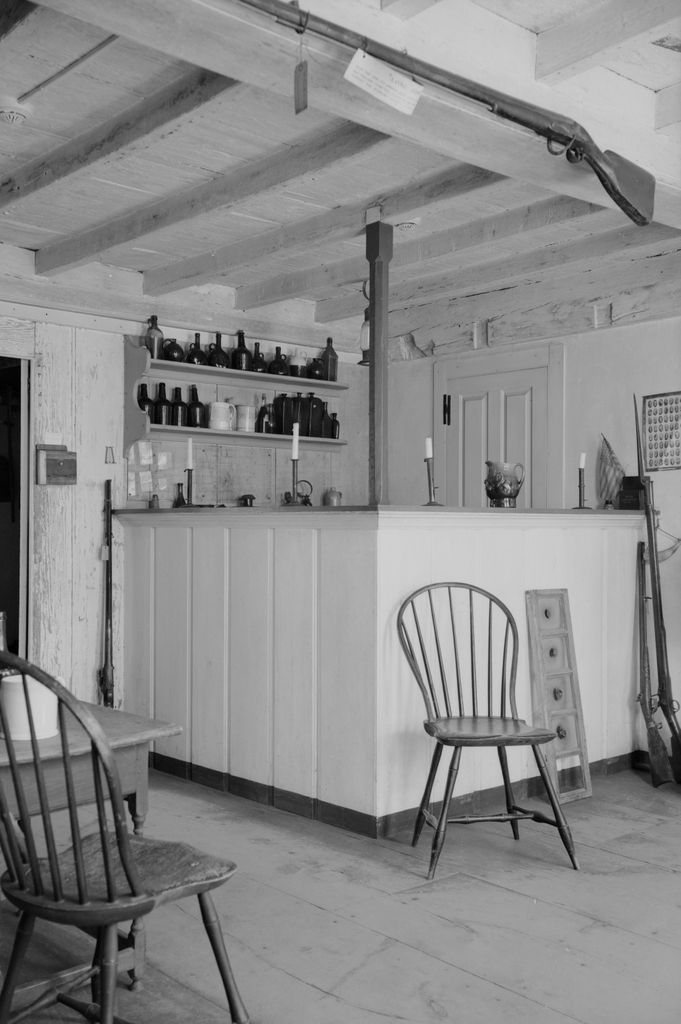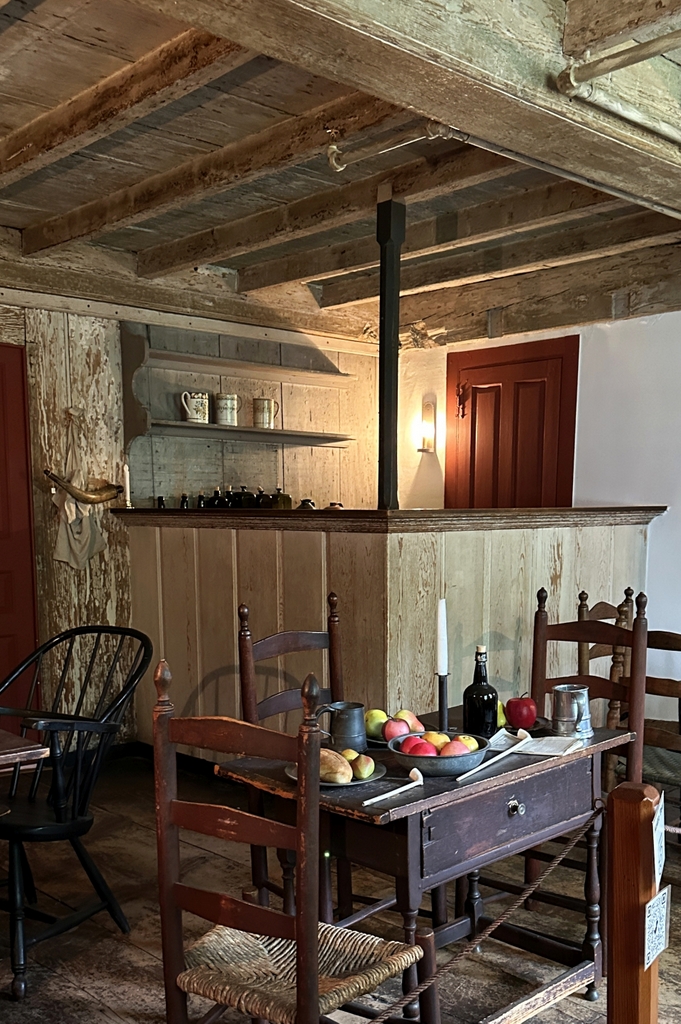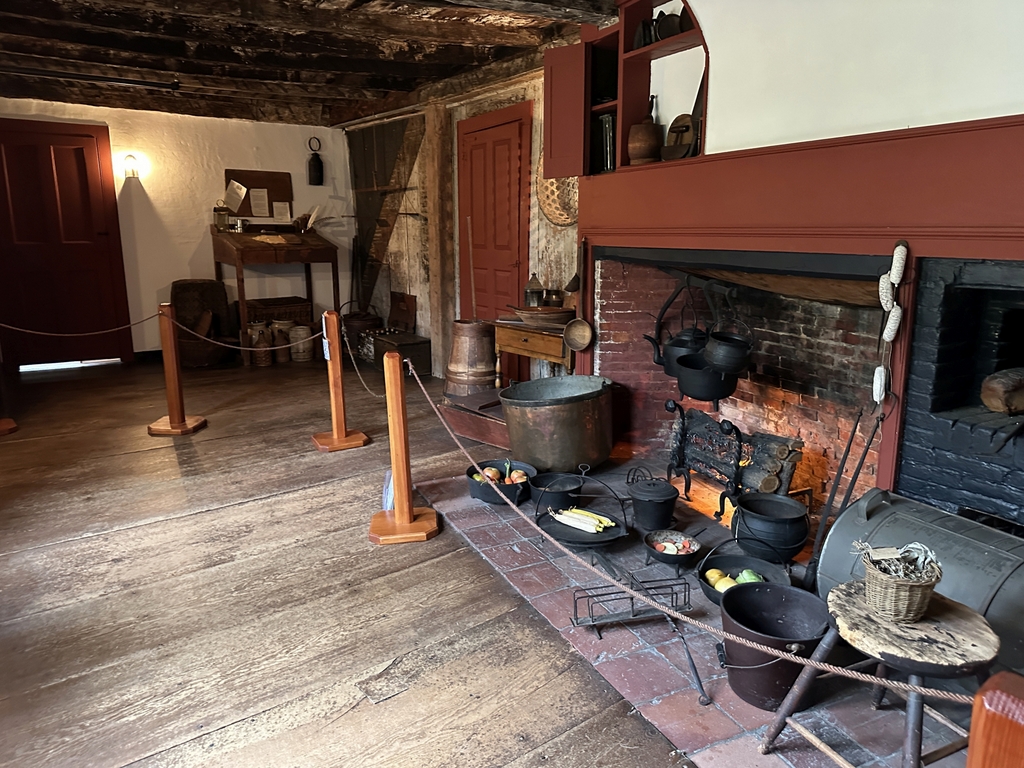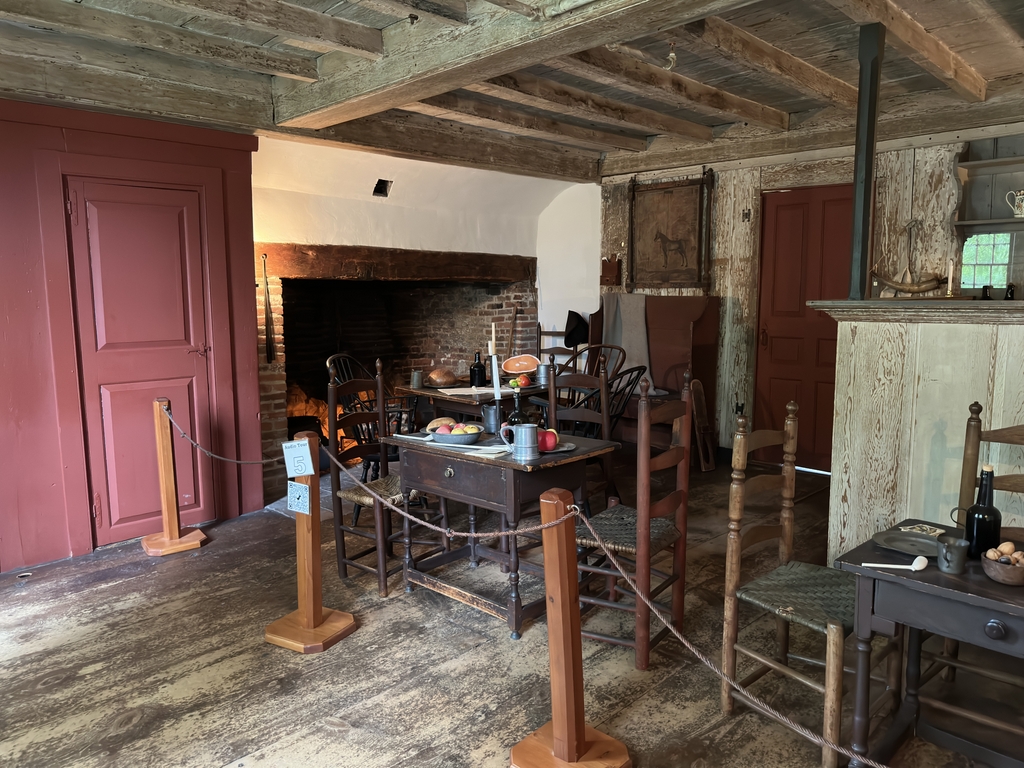The tap room at Buckman Tavern in Lexington, around 1928-1940. Image courtesy of Phillips Library, Peabody Essex Museum, Samuel Chamberlain Photograph Negatives Collection.
The scene in 2023:
This room at Buckman Tavern is located directly adjacent to the kitchen, which was featured in the previous post. As explained in that post, this building is a prominent landmark in Lexington, due to its role in the start of the American Revolution. It was here in Buckman Tavern that many of the Lexington militiamen gathered in the early morning hours of April 19, 1775, before their confrontation with British redcoats outside the tavern on the Lexington Common. That skirmish marked the beginning of the American Revolution, and the day’s fighting ultimately led to the British retreat back to Boston, where they sustained heavy casualties along the way.
The tavern itself was built around 1710, and it was operated as a tavern and later a post office until the early 19th century. This room was the tap room, and it is located in the southwest corner of the building on the ground floor, directly to the right of the main entrance.
In 1913, the town of Lexington acquired the building and preserved it as a museum. The top photo was taken several decades later, and not much has changed since then. The tavern is still owned by the town, and it is operated by the Lexington Historical Society. Aside from a few modern features, such as pipes and electric lights, the tap room’s appearance reflects the way that it would have looked back in 1775.












